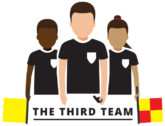In order to achieve optimal body composition for either aesthetic and/or refereeing performance purposes, we often cut calories and, more specifically, alter quantities of particular food groups that we consume. Namely, the low carbohydrate/high protein approach is among the most commonly used strategy in order to lose weight and maintain or increase lean mass. Where carbohydrate intake becomes extremely low (<20g/d), a ketogenic state is likely to be reached. This occurs due to the reduced availability of glucose and in turn, an increased production of ketone bodies from fat reserves which are then utilised as a source of energy.
As referees who have subjected themselves to such a regime at one point or another, they will testify it is not a pleasant experience. This has been supported by the literature with side effects of low carbohydrate diets including headaches, cramps and general weakness. From both a performance and productivity point of view, it is also important to understand that this strategy can impair brain function and so should be carefully implemented around a time where concentration does not need to be at its’ peak such as on matchday or where life demands are high. This has been supported by a neuro-psychological test requiring higher order mental processing and flexibility proved difficult during the first week of a 28 day ketogenic diet when compared to a non-ketogenic diet.
So, What Is Happening To Our Brains During This Time Of Reduced Glucose Availability?
The brain requires a constant supply of energy permanently, 24 hours a day/ 7 days a week; 100mg/min of glucose along with oxygen. At rest, the adult brain uses 20% of dietary energy consumed and 20% of inhaled oxygen. Even during sleep the brain continues to utilise glucose and interestingly, this increases by 16% during a nightmare. The brain runs on glucose alone and despite a fractional glycogen reservation, it relies heavily on its’ supply, for example, diet. The frontal cortex of the brain is most susceptible to becoming hypoglycaemic which in turn impairs planning of tasks, alters initiative, changes in personality and reduced productivity.
Intellectual efficiency is much determined by the quality of the first meal of the day. Breakfast is often referred to as the most important meal of the day anecdotally, however, it is really the most important meal only if it is made up the correct nutrients in the correct amount. A bowl of sugar puffs will have an entirely different metabolic effect in comparison to a bowl of porridge having a contrasting effect on blood glucose levels and thus the energy supply to the brain. Sugar must arrive slowly but regularly into the blood stream in order to maintain positive glucose supply to the brain.
So How Do I Maintain A Steady Glucose Supply To The Brain On Matchday?
A glycaemic index (GI) has been established to classify foods according to the extent and duration of the rise in glucose level when they are consumed. Glucose itself is positioned at 100% on this index, honey at 73% and fructose at 23% which is contained in fruit. Consuming carbohydrates that have a slow energy release (i.e. a low glycaemic index) is the desired objective to maintain a steady energy supply to the brain. So, where carbohydrate within the diet has been reduced dramatically, in order to hold onto consistent brain function particularly in the area of cognition essential for performance and day to day tasks, consuming low (GI) foods at the start of the day is important.
A mix of low GI foods for referees to consider consuming on matchday include bran, oats, porridge, cherries, plums, grapefruit, whole milk, lentils and sweet potato to name a few. In theory, consuming low GI foods seems logical where one is trying to lower carbohydrate intake. In a practical sense of course, we rarely eat carbohydrate on its own without some form of protein and/or fat to accompany it. Consuming carbohydrates alongside other macronutrients alters the GI of food and can make it difficult to quantify its’ energy release.
To add to the complexity of achieving ketosis, not all low-carbohydrate diets are necessarily ketogenic as 57g of glucose can be metabolised from 100g of dietary protein. Blood and urine samples are a means of monitoring whether an individual on a ‘low-carbohydrate diet’ is actually in a state of ketosis or not. This is, of course, not always practical. However, with that, where total calorie intake is considered, studies have concluded that it is the restriction of carbohydrate rather than total calories that is required to achieve a state of ketosis.
Safety Approach
Research examining the long term effect of this dietary approach has largely been conducted on epilepsy sufferers and so it is difficult to translate any long term effects to the general population. There have been reports that this dietary approach may be nutritionally inadequate as it can be lacking in fibre, calcium, potassium, A, E and B vitamins. However, this inadequacy will depend on the level of carbohydrate restriction, duration of the regime, the sources of nutrients and its’ overall composition. In some cases, the nutritional composition may surpass an ‘as and when’ eating regime depending on the factors mentioned.
Takeaway Tips & Facts
- The brain needs glucose to function.
- Where one is trying to lose body fat for refereeing performance and aesthetic purposes, a ketogenic regime may be adopted.
- The timing of this implementation is important so as it does not hinder daily function especially where cognition is concerned.
- Choosing carbohydrates that release energy slowly into the blood stream is essential.
- Due to the unknown consequences of adopting this eating pattern long-term, one should be mindful of overall health when using a ketogenic approach.
At The Third Team I work individually and in collaboration with different professionals where I have developed workshops and 1-2-1 sessions associated with Resilience and Mental Toughness Development to help referees. The workshops and 1-2-1 sessions are interactive, where referees are encouraged to open up and share their experiences to help themselves and each other.
Feel free to contact me if you’d like to know more about my workshops or 1-2-1 sessions and how I could help you or your officials.
Best Wishes,

Nathan Sherratt
Referee Educator & Managing Director of The Third Team

Nathan Sherratt
Nathan Sherratt, Referee Educator, Resilience Trainer and Managing Director of The Third Team. A Mental Toughness Practitioner based in County Durham, North East England.

